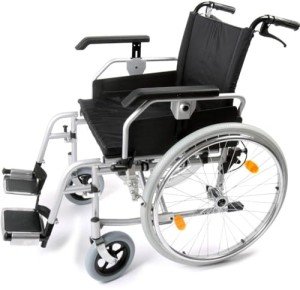The 9 Things Your Parents Teach You About Bariatric Wheel Chair
페이지 정보
Bette 작성일25-02-07 17:51본문
 Benefits of a Bariatric Wheel Chair
Benefits of a Bariatric Wheel ChairA bariatric wheelchair is developed to deal with a higher weight capacity than basic wheelchairs, ranging from 300-700 pounds. They are frequently classified as sturdy power wheelchairs by Medicare and may need a prescription.
Features like a "no-lift" tilt and assisted back recline conserve caretakers from straining during repositioning. Seats with superior pressure redistribution, such as Broda's Comfort Tension Seating, reduce the risk of pressure ulcers.
Convenience
Whether in the house or at the health care center, comfort is just as important for bariatric patients as it is for any other kind of client. Specialized wheelchairs offer the capability to attain this in a number of ways, consisting of sturdier frames and larger seats that make it simpler for bigger users to move and remain steady throughout motion.
A large range of devices is likewise offered to optimize the comfort and performance of a bariatric chair. From padded elevating footrests that are adjustable and can swing away, to desk-length arm rests that are quickly moved, these devices can supply the extra support and stability needed for comfy usage.
Other vital features to look for in a bariatric wheelchair include reclining capability, and support around the gluteal area to promote proper posture and minimize pressure injuries. Some chairs even feature a front-to-back tilt function to alleviate the sit-to-stand transfer process and aid reduce caregiver stress. Furthermore, wheelchair cushions can play an integral role in decreasing pressure injuries and guaranteeing user convenience. The AliMed Bariatric Tri-Foam Cushion is particularly created with a special layering system that supplies advanced pressure redistribution, preventing the buildup of heat and wetness and reducing the risk of pressure ulcers.
Finally, search for a bariatric chair with seating that is adjustable to fit the requirements of each individual user. Some producers, like Broda, style chairs with a variety of adjustments and functions to help find the ideal fit. For example, the Vanguard Bariatric Wheelchair uses a "no-lift" tilt and assisted back recline that are run by a convenient foot pump to alleviate the user into position without straining the caretaker.
A crucial piece of recommendations when looking for a bariatric wheelchair bariatric transit 24 inch is to get an extensive seating assessment from a healthcare specialist. This will supply a thorough view of the individual's sizing needs, mobility objectives, and activities of everyday living. It will also serve as documentation of medical need for insurance functions. Ultimately, this will guarantee that the chair fits properly and uses the optimum level of comfort and functionality.bariatric high back wheelchair wheelchairs.
Self-reliance
Using a bariatric wheelchair that supplies sufficient positioning and assistance enables users of up to 750 pounds to remain more independent in activities of daily living. Wheelchairs with specialty placing functions like no-lift tilt and helped back recline help lower caretaker strain while supplying a more comfy seating experience for the user. Accessory alternatives like calf pads that accommodate bigger leg sizes and a variety of armrest heights offer the option to select the very best fit for a large range of patients. These specialized adjustments make it much easier for a client to do things like self-feeding, grooming, and getting in/out of the shower. These are the little things that can amount to a more fulfilling lifestyle for someone with bariatric wheelchair 600 lb capacity needs.
Durable reinforced frame, casters and weight bearing points make sure durability.
Security
A bariatric wheelchair has a greater weight capacity than basic chairs, permitting it to comfortably support obese individuals. However, a person's frame size, shape and structure also contribute in whether a bariatric chair is appropriate for them. For instance, those with broad thighs may need a bariatric wheelchair that supplies ample room to prevent pressure ulcers.
An essential security feature is the chair's load capacity, determined by its fixed and active load capabilities. Static load describes the amount of weight that a chair can hold while sitting still, and active load is measured by carrying out a drop test on the wheelchair to replicate a person plopping down into it.
The specialized frames of bariatric wheelchairs are reinforced to ensure stability and safety. Additionally, lots of have adjustable parts that permit a customised fit. A well-fitting seat is important for a comfy trip, as shallow seats trigger a shift of weight forward that can increase instability. Deep seats can also press on knees, which triggers pelvic rotation that can result in a greater threat of falls. On the other hand, seats that are too wide can cause skin shearing and turn the legs inward, putting stress on hips and joints.
Selecting the ideal wheelchair for an overweight patient also requires considering their daily activities, way of life and surroundings. For instance, those with long commutes might need a bariatric wheelchair with resilient tires and casters that can manage rough surfaces, in addition to a more steady seat with a higher weight capacity to accommodate heavy clothing and additional padding.
Healthcare experts such as physical therapists and physical therapists can help to identify which kind of wheelchair is best for their patients. Typically, these professionals suggest bariatric wheelchairs with pressure redistribution and repositioning functions to help lessen the danger of pressure injuries. These functions can make a significant distinction in enhancing a patient's comfort and total lifestyle.
댓글목록
등록된 댓글이 없습니다.

















